Today we're dusting off our old Sandy Bridge Core i7-2600K test system and pairing it up with a GTX 1080 Ti to see how well the seven-year-old processor holds up in the latest and greatest PC games compared to Intel's new Core i7-8700K. We know that the 2600K still has some fight left in it, but next year could finally be time for those equipped with the aging quad-core to make their long-awaited upgrade.
By the end of 2018, the GTX 1080 Ti is likely to be ousted by an even faster flagship GPU and as a result mid-range GPUs are expected to be speedie as well, which is likely to require more processing power than the 2600K can provide.
For today's testing we have almost a dozen titles on hand for benching the 2600K and we tested each game using three different quality presets. The focus will be on the 1080p resolution but we also have some 1440p results as well, though of course these are more GPU bound but many of you seem interested in those figures so I've included them.
Last month we tested the fourth-generation Core i7-4770K under the same test conditions and found it was still hanging in there remarkably well, even with the mighty GTX 1080 Ti.
Can Intel's much older second-gen 2600K prove just as impressive? Let's jump into the benchmarks to find out...
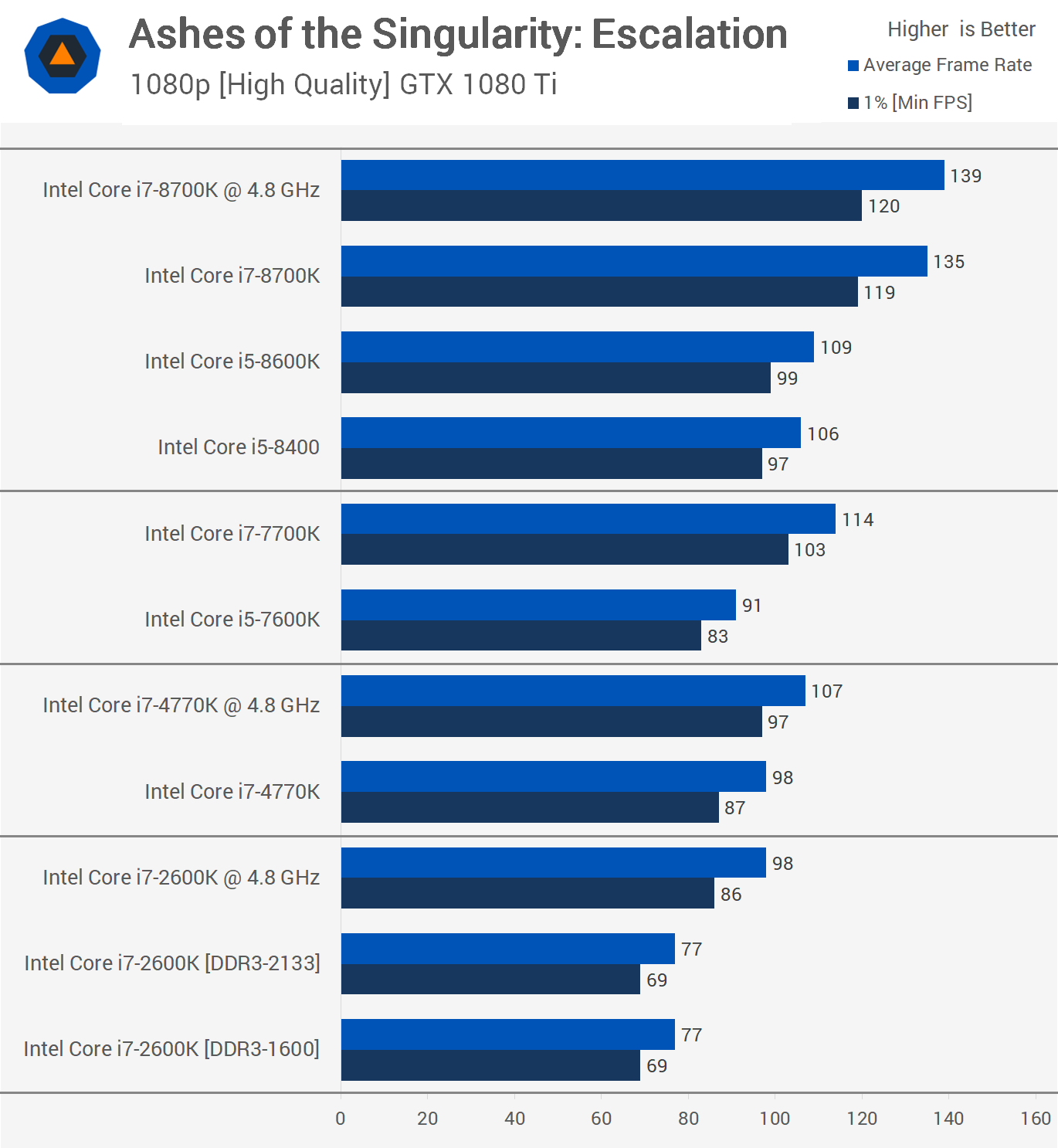
First up we have Ashes of the Singularity and out of the box the 2600K delivered a 69fps minimum and 77fps average, making it a little over 40% slower than the 8700K. Surprisingly, overclocking the 2600K to 4.8GHz only placed it on par with the stock 4770K and while it did allow for very playable performance it was still around 30% slower than the 8700K.
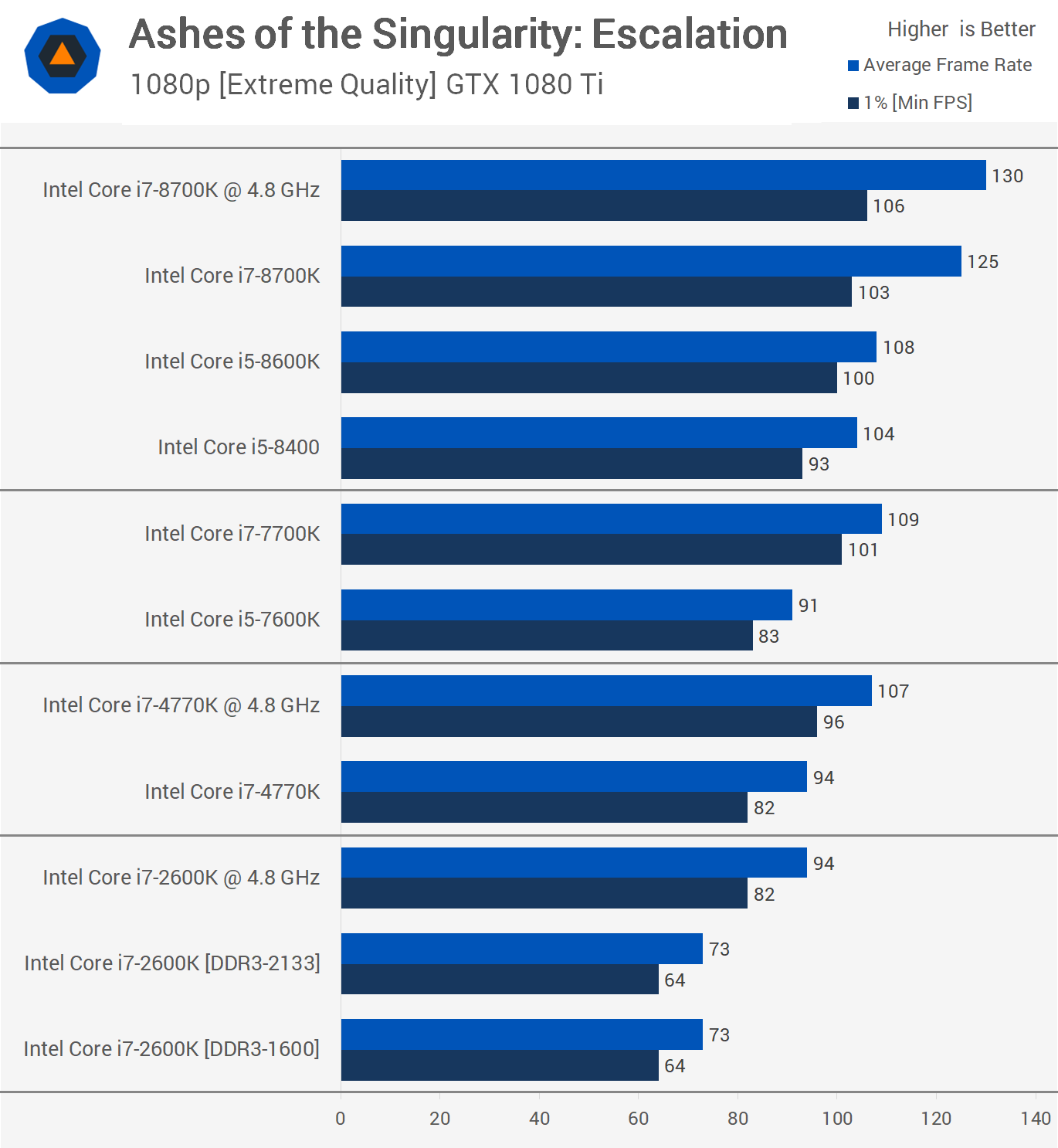
Increasing the visual quality settings with the extreme preset didn't change much, here the 2600K was 28% slower than the 8700K, so it still trailed by a rather large margin.
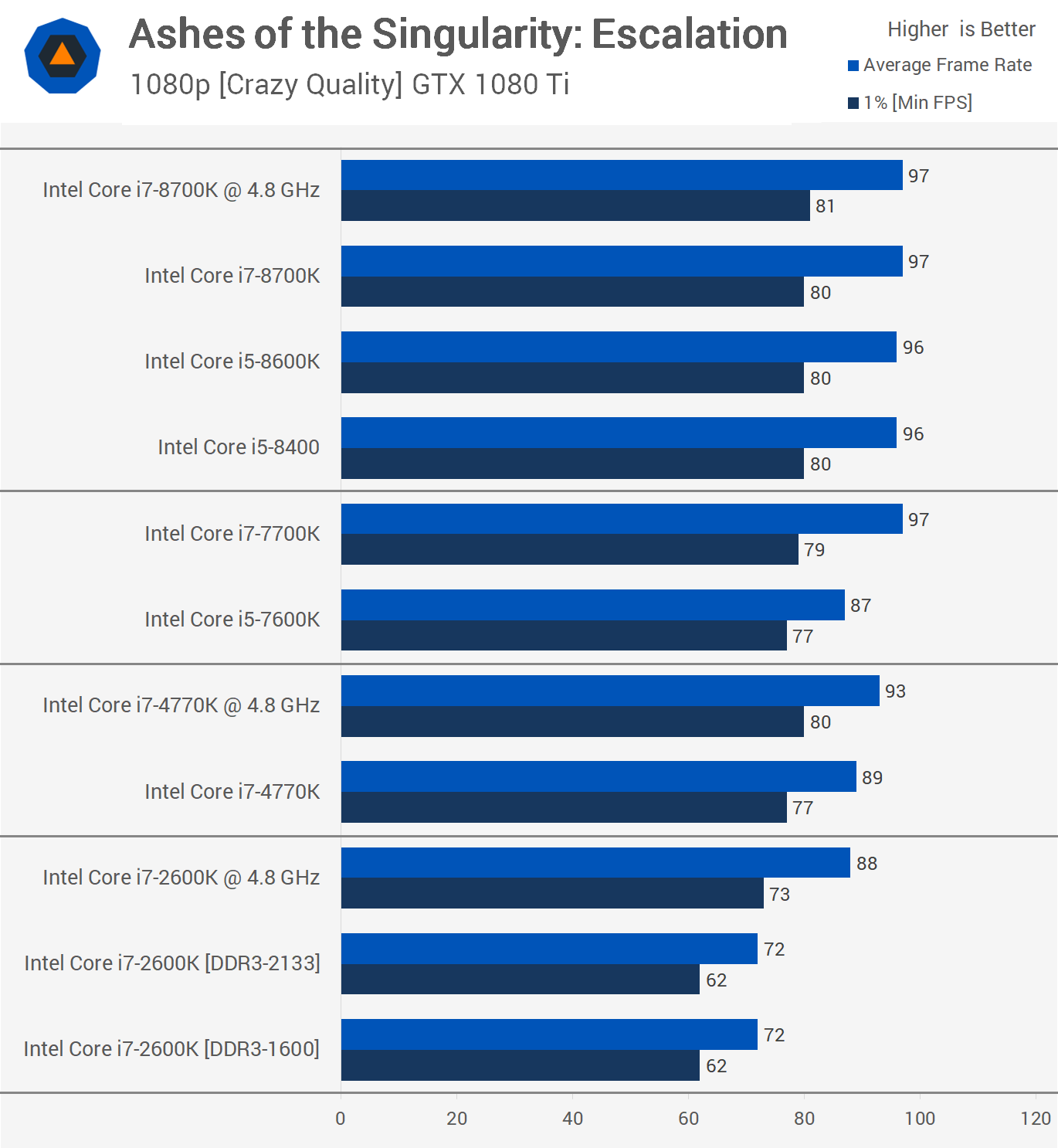
Using the crazy preset we're mostly GPU bound though out of the box the 2600K takes a beating for the average frame rate. Overclocked performance was boosted by 22% to 88fps and now the 2600K is only around 9% slower than the majority of the seventh and eighth-gen CPUs.
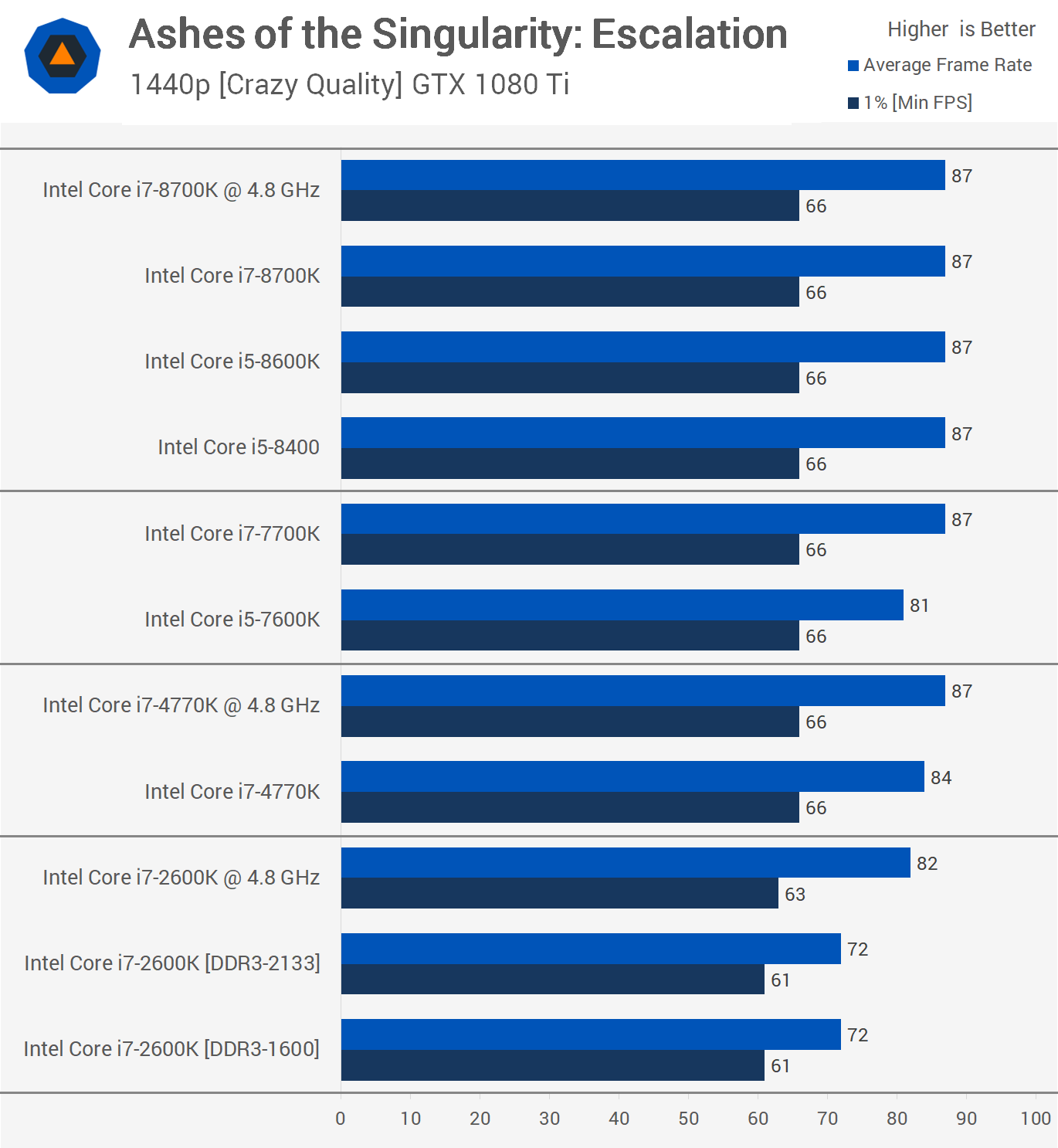
The finally the last Ashes of the Singularity test was conducted at 1440p and here the margins close up a little more but even once overclocked the 2600K was around 6% slower than the more modern Intel processors.
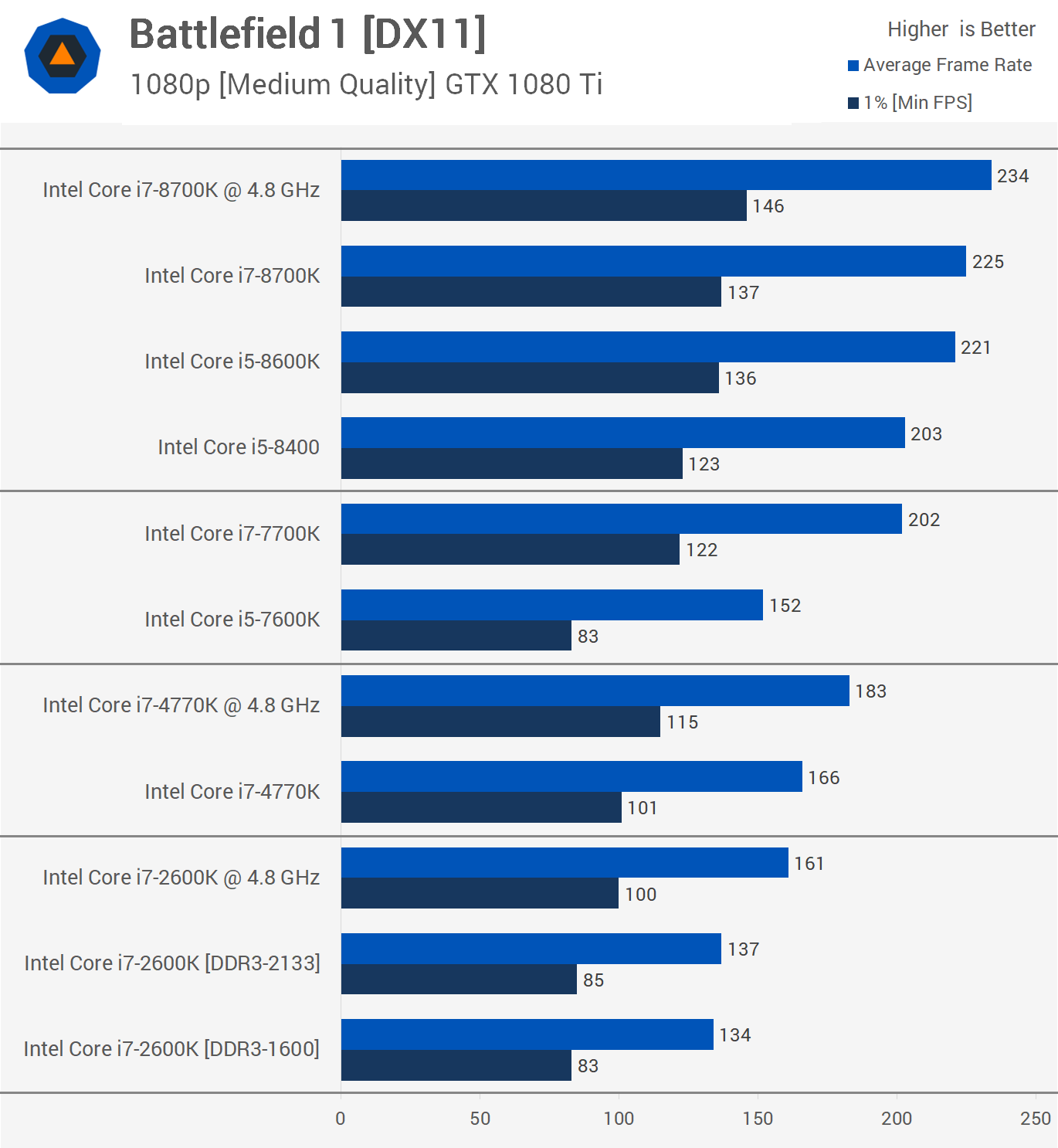
Next up we have Battlefield 1 and boy has the Core i7-2600K aged in this one, at least when using medium quality settings at 1080p with a mighty powerful graphics card. Under those conditions it looks pretty slow, but then it is seven years old now so that in mind it's bloody impressive really. Anyway, here it was again, roughly 40% slower than the 8700K and even overclocked struggles to match the stock 4770K.
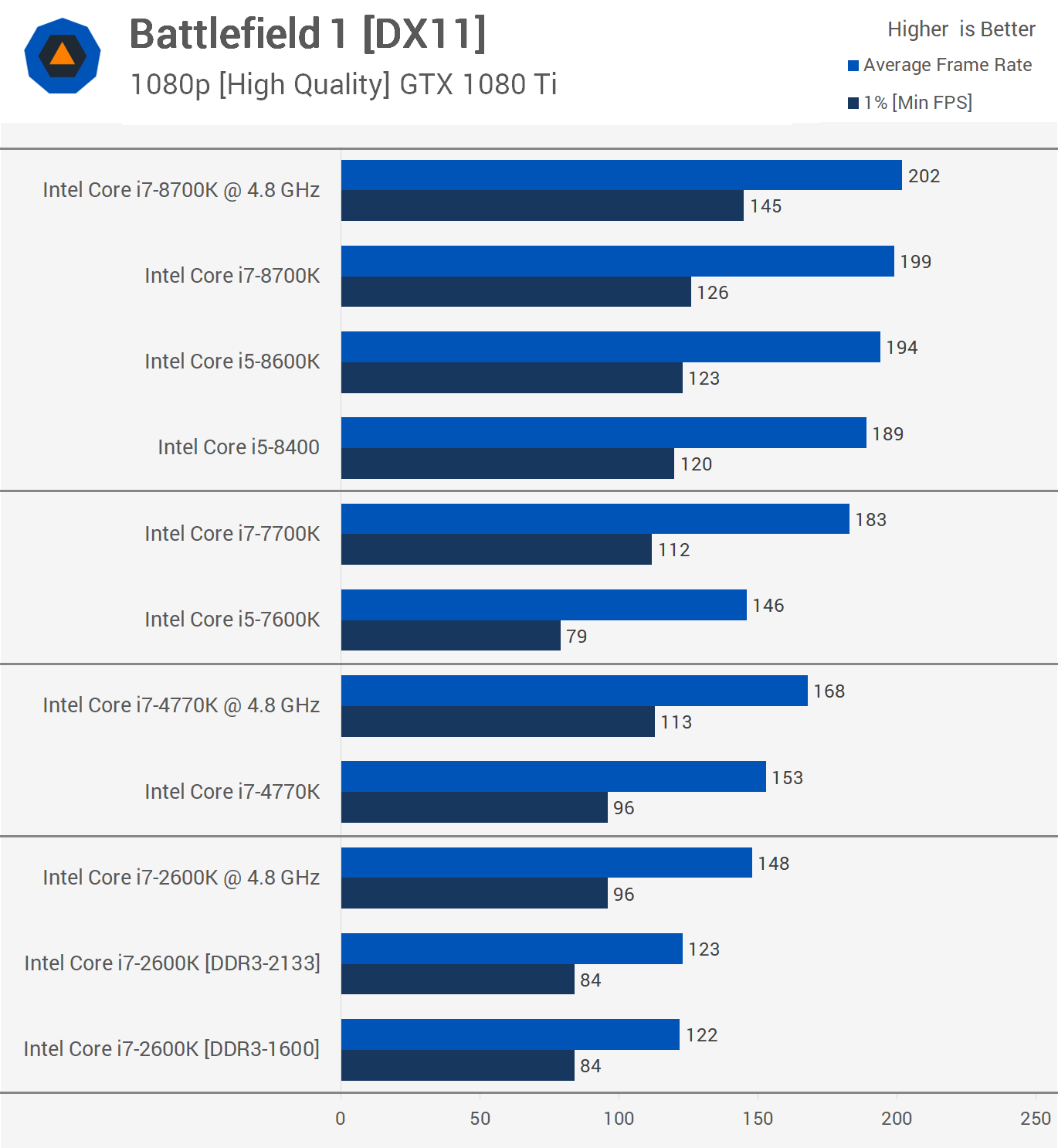
Increasing the visual quality settings with the high preset doesn't change much, the 2600K is still almost 40% slower than the 8700K and once overclocked again falls just short of the stock 4770K which was the most surprising result for me.

Even with the ultra quality settings enabled, the 2600K still gets trampled – here it was 35% slower than the stock 8700K. With both CPUs overclocked the margin is reduced to 22% for the average though I should note the 8700K is GPU limited in this test. The 1% low result is a better indicator of true performance and here the 2600K was 34% slower.
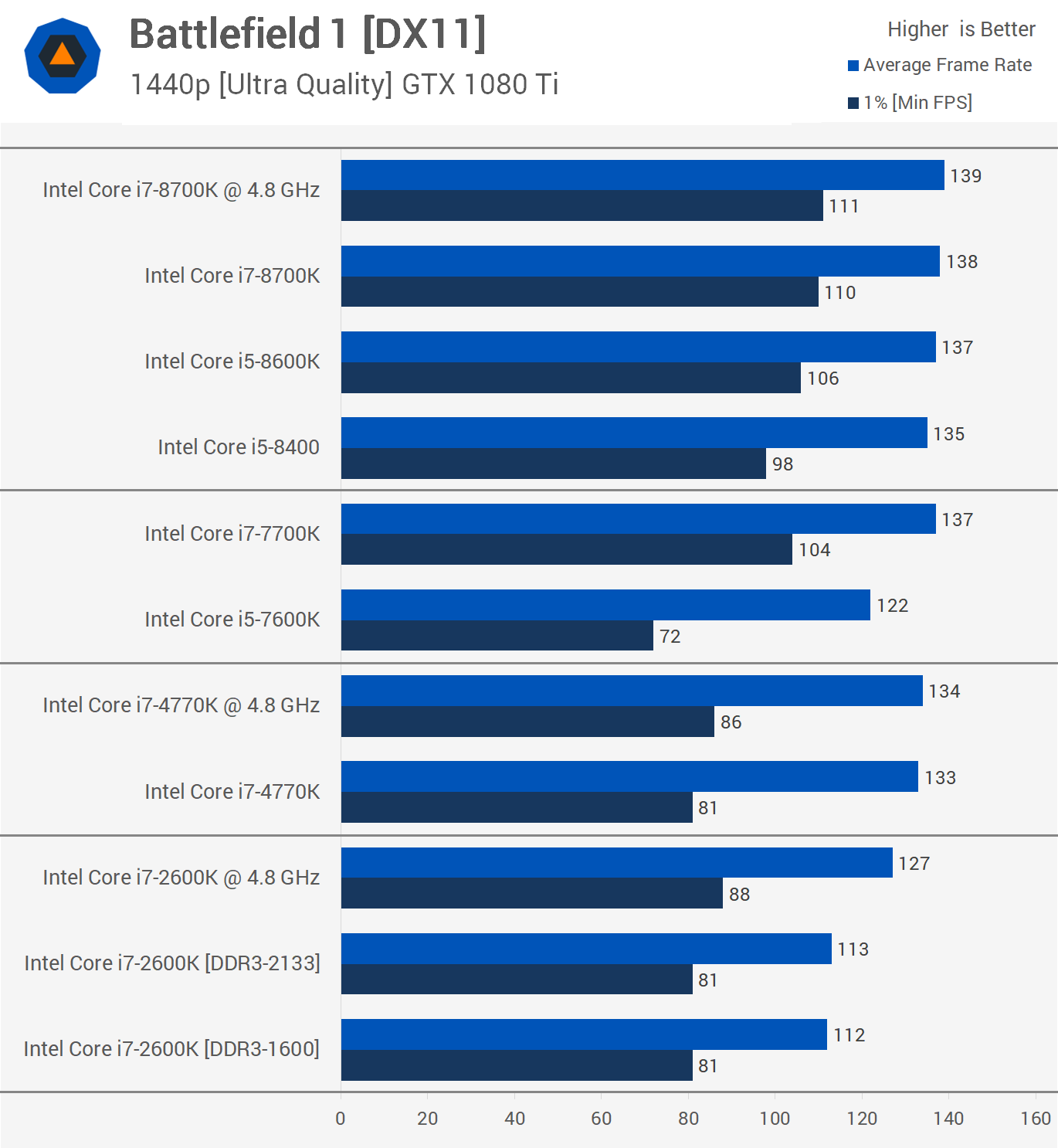
It's worth pointing out though that most GTX 1080 Ti owners probably aren't interested in playing Battlefield 1 at such a low resolution – 1440p seems more appropriate. Here we're even more GPU limited and as a result the 2600K was just 9% slower than the 8700K when comparing the average frame rate once both CPUs were overclocked. Of course it's the 1% low that we should really focus on and in BF1 the 2600K was still 21% slower, which is certainly a noteworthy deficit.

